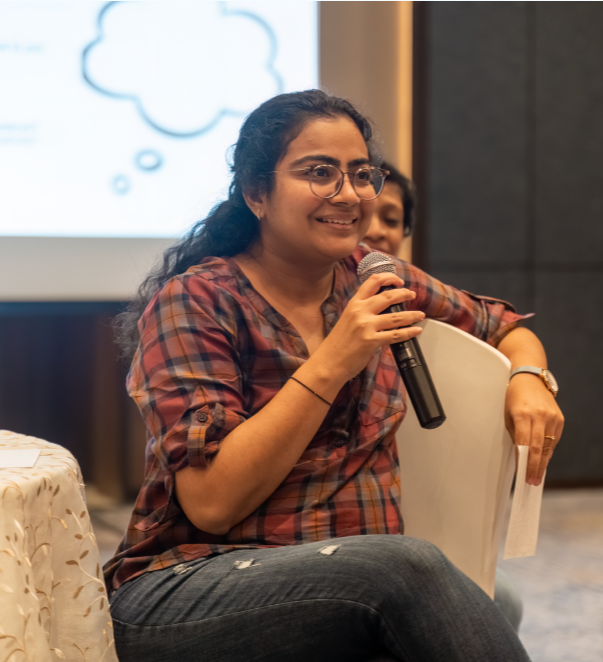Introduction
A happy client, a happy team and successful delivery of projects is the foundation of agency success. But is that always enough? Maybe yes, when you are a small agency. But as an agency grows, we see the cracks.
This is the narrative of every agency’s growth, including ours. We had great teams and great intentions. We cared deeply about our work and our client relationships. And to be honest, that worked—until it didn’t.
During our growth years, we unknowingly fell into cognitive ease—projects were getting delivered, clients were happy, and revenue was flowing. But that comfort became a blind spot. Good delivery can mask deeper dysfunction if you’re not looking through a financial lens.
As we grew, so did the complexity:
- Multi-service engagements with diverse pricing models.
- Long-term relationships where delivery timelines blurred across quarters.
- Team bandwidth stretched thinner without clear alignment with the revenue impact.
We were delivering well, but we weren’t seeing clearly. And without visibility, we were relying on instinct, and instinct doesn’t always succeed at scale. It is around this same time when I came across the Gleicher Formula for Change:
D × V × F > R
Change only happens when our Dissatisfaction with the current state, multiplied by a compelling Vision for the future and First steps toward it, is greater than the Resistance we feel.
This equation hit home.
This formula helped me shape one of the most important transformations I’ve led: bringing financial visibility to the core of Axelerant’s delivery and strategy.
This blog is that story—from the moment we acknowledged our discomfort, to how we mapped a vision, and the smallest steps that ultimately changed everything.
D = Dissatisfaction with the Current State
Change doesn’t start with ambition—it starts with discomfort that’s too costly to ignore.
Like most small agencies, it had fallen into cognitive ease—the false sense of security when things appear fine. Projects were being won, delivered, clients were happy, and seemed productive.
Overall, we considered it a success. We knew how to ship work. But we didn’t always know how that work translated into:
- Profitability per project or service line
- Financial predictability
- Scalable margins
As Axelerant grew, we started seeing symptoms:
- Projects are running longer than planned without clear visibility into burn rates.
- Teams stretched across accounts with no direct line of sight to revenue contribution.
- A growing challenge in forecasting revenue and workforce planning, especially in uncertain quarters.
The dissatisfaction wasn’t abstract— it was affecting our ability to make confident decisions.
At first, these concerns were vague. But over time, we turned them into clear, specific, and shared pain points, which made inaction unacceptable.
💬 We were asking ourselves—are we growing, or just getting busier? That dissatisfaction was real.
We Made the Problem Specific, Not Vague
|
Instead of Saying |
We Started Saying |
|
We should be more financially mature as an agency. |
Our largest engagement overran by 18% last quarter because the team didn’t have visibility into burn. That wiped out the margin we were counting on for Q3 investments. |
|
Forecasting could be tighter. |
Our revenue forecast was off by $72,000 last quarter—enough to pause hiring for two critical roles. |
We Highlighted It, Repeatedly
Discomfort only drives change when it’s shared, visible, and unignorable.
We stopped keeping financial disconnects siloed inside finance or delivery retros. Instead we:
- Formed a core revenue group with representatives from the delivery, sales and finance teams
- Identified key metrics & variables that needed to be made visible
- Sensitised BU leaders on their current cost & revenue structures, along with their impact
Yes, it was uncomfortable. But it was also galvanising. We created organisational awareness that status quo decisions had real consequences.
V = Vision for Financial Maturity
Once we acknowledged the friction, the next step was crafting a compelling, shared vision—one that went beyond spreadsheets and dashboards.
Our vision looked like this:
- Delivery teams that understood the financial impact of their work.
- Project managers who could speak to metrics & data with ease.
- A revenue forecasting system tied directly to actual delivery data.
- Service-level clarity: which offerings are fueling growth and which need refinement?
Early in our journey, we made the mistake of focusing too much on what needed to change:
- We’ll rebuild the reporting.
- We’ll improve forecasting accuracy.
- We’ll clean up data across systems.
It was all true—but not compelling. Because what people heard was: We’re adding complexity and more work to your already busy day.
What shifted everything was reframing the vision around outcomes, not processes.
-1.png?width=2770&height=1110&name=image%20(3)-1.png)
This wasn’t about turning everyone into accountants—it was about giving every team, from Delivery to Strategy to Sales, a shared language of financial intelligence & impact:
|
Area |
Before (Current Outcome) |
After (Future Outcome) |
|
Project Profitability |
Margins were understood only in hindsight (if at all) |
Real-time margin visibility for every live project |
|
Forecast Accuracy |
Delivery not aligned with invoicing; revenue targets missed |
Forecasting model tied to pipeline, delivery status, and team allocation |
|
Service-Level Insight |
No clarity on which services drove growth or loss |
Dashboards showing contribution by service type, pricing strategy, and margin |
|
Delivery Ownership |
PMs unaware of how their decisions affect commercial outcomes |
PMs adjusting team, scope and budget based on financial metrics |
💬 The vision wasn’t just better process—it was better agency decisions at every level.
F = First Steps That Made Change Tangible
Change doesn’t require perfection—it requires momentum and direction.
Big visions die in ambiguity. And at Axelerant, we knew we couldn’t afford to leave people wondering, “What exactly are we doing next?”
To tip the scale toward change, we focused on building confidence through motion, not big leaps, but small, concrete steps rooted in familiar behavior, and framed as logical extensions of choices we’d already made.
We didn’t start with perfection. We started with what we had.
We Shared the Playbook—Not Just the Problem
Instead of saying: “We need to overhaul our financial visibility.”
We said: “Here’s how we’ll evolve—from project tracking to margin insights to predictive forecasting. And here’s what it looks like month-by-month.”
We documented our rollout plan:
- Week 1–2: Introduce service-wise revenue tracking
- Week 3–4: Map delivery roles to financial data touchpoints
- Week 5–6: Sensitize delivery teams to metrics, data and their impact
- Week 7–8: Build & improve forecasting data & report
This turned our vision into a trackable path, not just a strategic goal.
💡 We even referenced similar internal efforts:
Remember when we cleaned up resource planning tools? This is the same kind of cleanup—just tied to our numbers, not hours.
Here’s What Our “F” Looked Like
|
Sr. No. |
What We Did |
How We Did |
Description |
|
1 |
Rebuilt Our Financial Reporting |
Split views into: - Project-specific financials: budget, actuals, burn, margin - Service-specific visibility: revenue, contribution, trends |
This alone changed the conversation—from “How’s the project going?” to “How’s it performing financially?” |
|
2 |
Consolidated Forecasting into One Source |
We created a rolling forecast that was tied to: - Signed projects |
We moved from static revenue targets to living forecasts that adapted to real-time shifts. |
|
3 |
Created a Global Income Statement for FY 24-25 |
This helped us: - Spot dips early - Align financial decisions with delivery operations - Give all stakeholders a snapshot of organizational health |
It became our single view into short-term predictability + long-term health. |
|
4 |
Defined Review Rhythms |
We didn’t just build reports—we embedded them into the rhythm of the business: - Monthly leadership reviews - Quarterly margin analysis by service line - Forecast check-ins tied to delivery status updates |
Instead of a year-end review, we had monthly micro-adjustments that prevented macro issues. |
R = Resistance Isn’t Logical—That’s Why It’s Powerful
At Axelerant, resistance didn’t look like people saying “no.”
It looked like them saying:
- Do we really need this?
- How do we know the data is accurate?
- Is this going to slow us down?
And truthfully, those weren’t just questions—they were protective beliefs.
Because if our current way of working had gotten us here… wasn’t it safer to stick with it?
As Rory Sutherland puts it: “The human mind doesn’t run on logic any more than a horse runs on petrol.”
What Resistance Looked Like at Axelerant
Resistance wasn’t rooted in facts—it was rooted in fear:
- Fear of being overburdened: Do I have to learn a whole new system now?
- Fear of losing control: Will this take ownership away from my team?
- Fear of effort without payoff: Is this really going to make my day easier?
Resistance Wasn’t the Enemy—It Was the Signal
Resistance showed us where people needed reassurance.
It showed us who had decision anxiety.
It showed us where clarity was still missing.
And once we worked through it with empathy, not pressure, resistance lost its power.
Conclusion: Financial Visibility Isn’t a System—It’s a Strategic Capability
Today, Axelerant is not just running leaner. We’re running smarter.
- Leadership makes decisions proactively, not retroactively.
- Our team members know where we stand financially.
- Forecasting guides strategy, not just reporting.
- And financial clarity is part of how we define success, not just revenue, but resilience.
Financial visibility isn’t a luxury. It’s the foundation that transforms agency stability into growth, and growth into sustainability.
If your agency is scaling and you’re relying on instinct, the Gleicher Formula can guide your shift.
Let your dissatisfaction drive urgency, your vision set direction, and your first steps build momentum.
Because when the resistance shows up—and it will—what matters is that the change feels worth it.
And for us? Seeing clearly made all the difference.

Hetal Mistry, Director Of Global Delivery
Passionate about storytelling and history, I love reading and exploring music. Family time is essential, and I enjoy decluttering. Protecting my sleep and meals keeps me happy!

 We respect your privacy. Your information is safe.
We respect your privacy. Your information is safe.

.png)

Leave us a comment